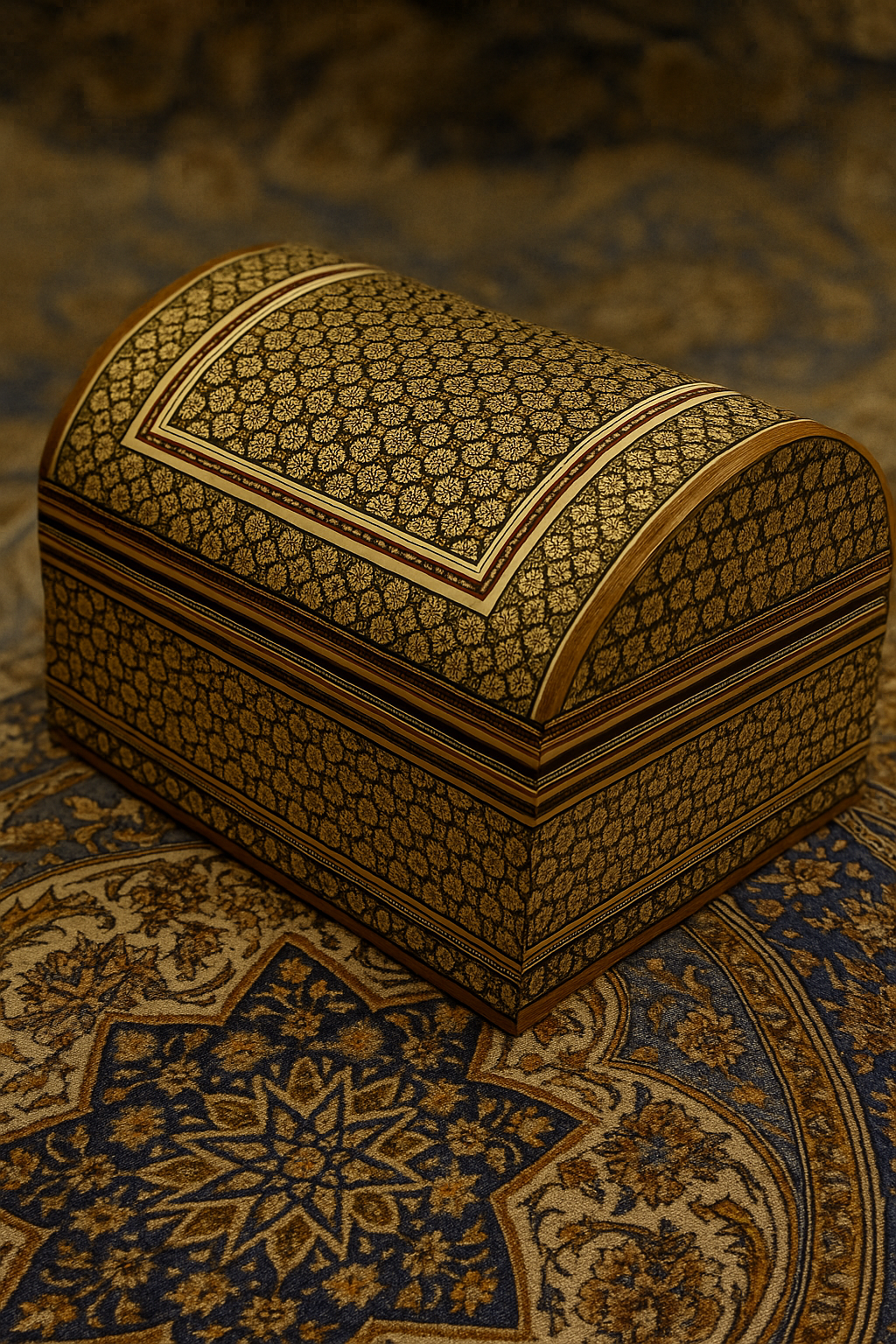Introduction
Khatam is Persian marquetry: thousands of tiny triangles—cut from wood, brass, and bone—arranged into starbursts and tessellations, then pressed and veneered over objects like jewelry boxes, chessboards, frames, and Qur’an cases. The beauty of Khatam is mathematical: harmony born from precise ratios and repeating geometry.
Origins & Heritage
Khatam flourished in the ateliers of Isfahan and Shiraz, reaching a golden age under the Safavids. Masters standardized modular “rods” of bundled triangles that could be sliced into sheets and applied to curved or flat surfaces, allowing consistency across large commissions.
The Geometry Behind the Glow
Most Khatam patterns are built from equilateral triangles arranged into six- or twelve-point stars. Repetition creates moiré-like depth as light hits brass pins and pale bone between darker hardwoods.
- Unit cell: tiny triangle (typically 1–3 mm side length in fine work).
- Star modules: 6-, 8-, or 12-point stars formed from clusters of triangles.
- Tessellation: stars, hexagons, and rhombi that tile without gaps.
Materials & Color
Artisans mix species for contrast—walnut, jujube, or ebony—then add brass for gleam and camel bone or synthetic ivory for clarity. Natural dyes temper the palette; clear shellac or lacquer protects and deepens the sheen.
How It’s Made (Simplified)
- Strips: Narrow sticks of wood, bone, and brass are planed to exact profiles.
- Bundle: Strips are glued into a triangular rod forming one slice of a star.
- Rod: Multiple bundles are bound to complete the star “log”.
- Slicing: The log is cured and sliced into thin veneers with identical patterns.
- Veneering: Sheets are applied over a wooden core (box, board, frame) and pressed.
- Finishing: Sand, fill, and polish; borders and corners are aligned by hand.
How to Judge Quality
- Scale & density: Smaller, tighter triangles indicate more labor and precision.
- Symmetry: Stars should be centered; repeats should align at corners/edges.
- Seams: Joints nearly invisible; no gaps or glue bleed.
- Finish: Smooth, even gloss without orange peel; crisp borders.
Care & Longevity
Keep away from high heat and humidity swings. Dust with a soft cloth; avoid harsh cleaners. For heirloom pieces, use a microcrystalline wax a few times a year to maintain luster.
FAQ
Is Khatam the same as intarsia?
No. Intarsia fits larger wood pieces like a puzzle. Khatam uses micro elements (triangles, rods) bundled into repeat patterns and veneered as thin sheets.
Can you make custom patterns?
Yes—within geometric constraints. Custom medallions or border motifs are possible; finer modules require more time.
Will a chessboard warp?
Quality cores resist warping. Keep away from radiators/sunlight and store flat; seasonal movement is normal and can be minimized with stable humidity.




